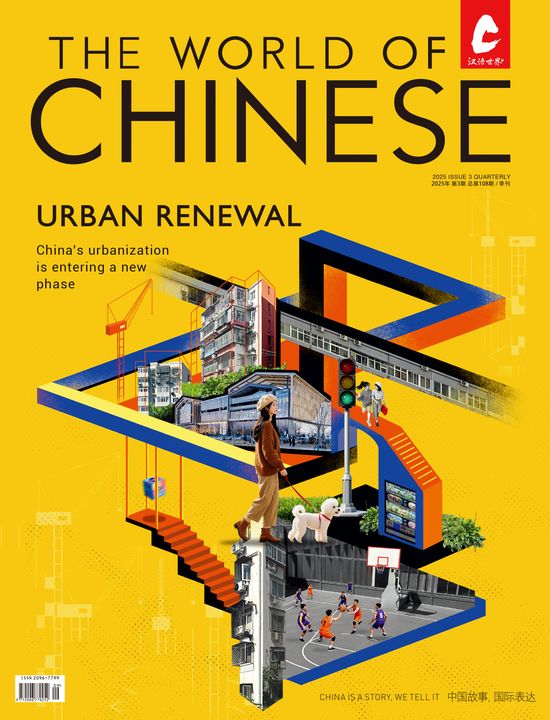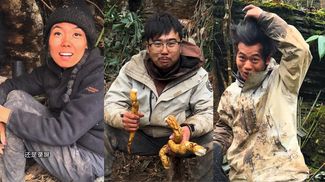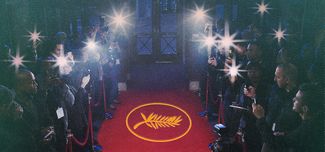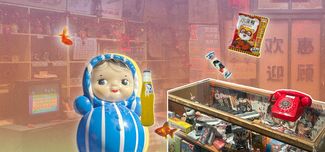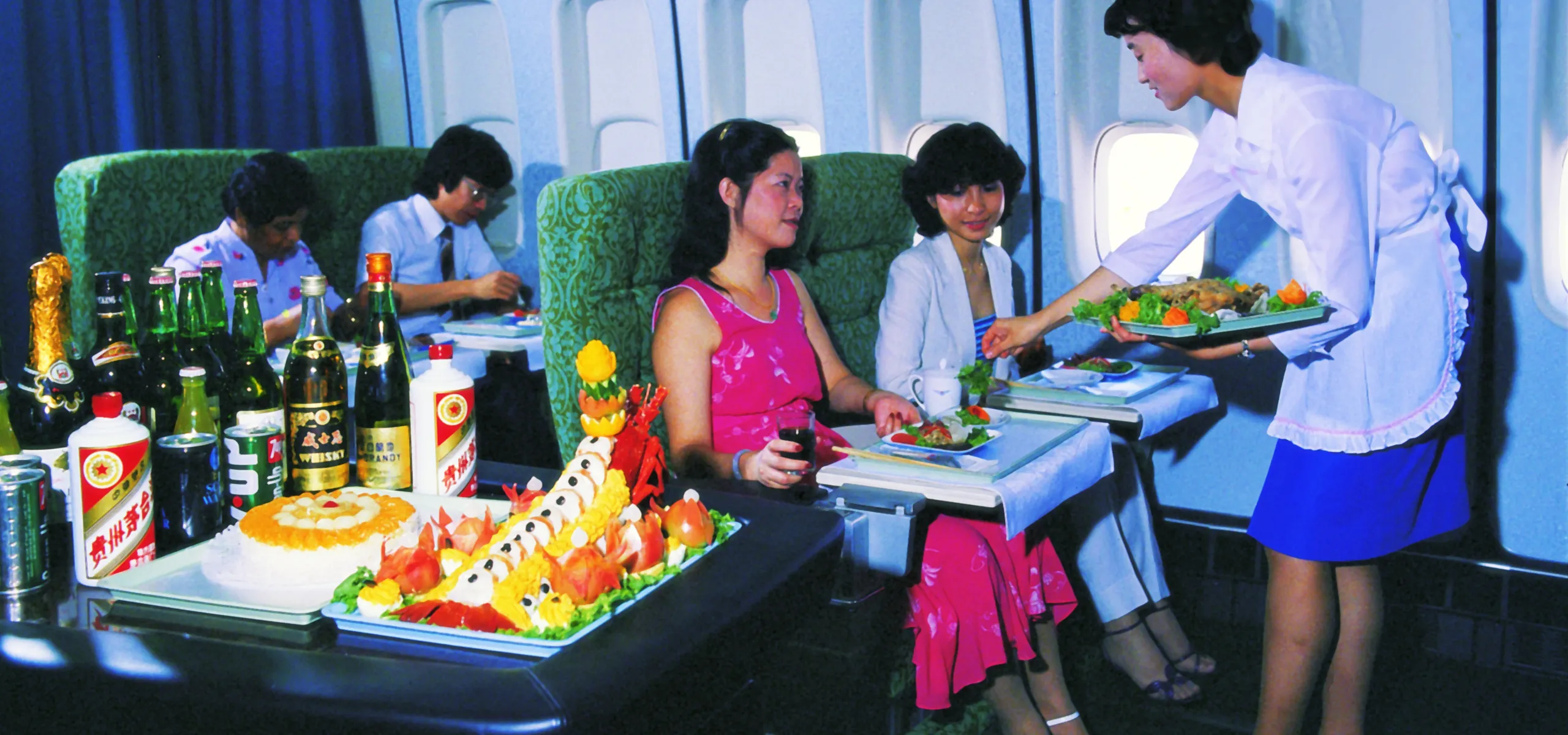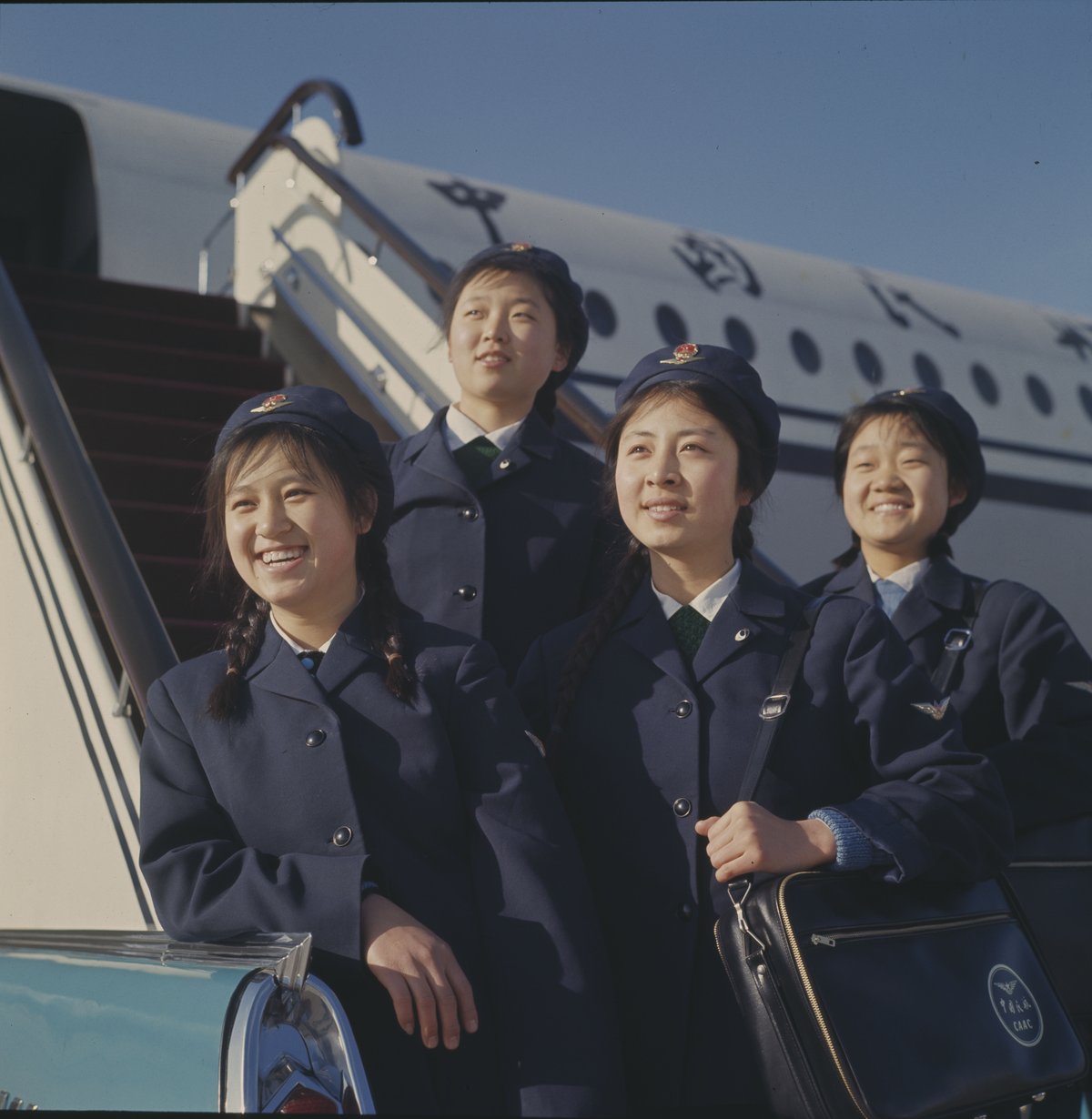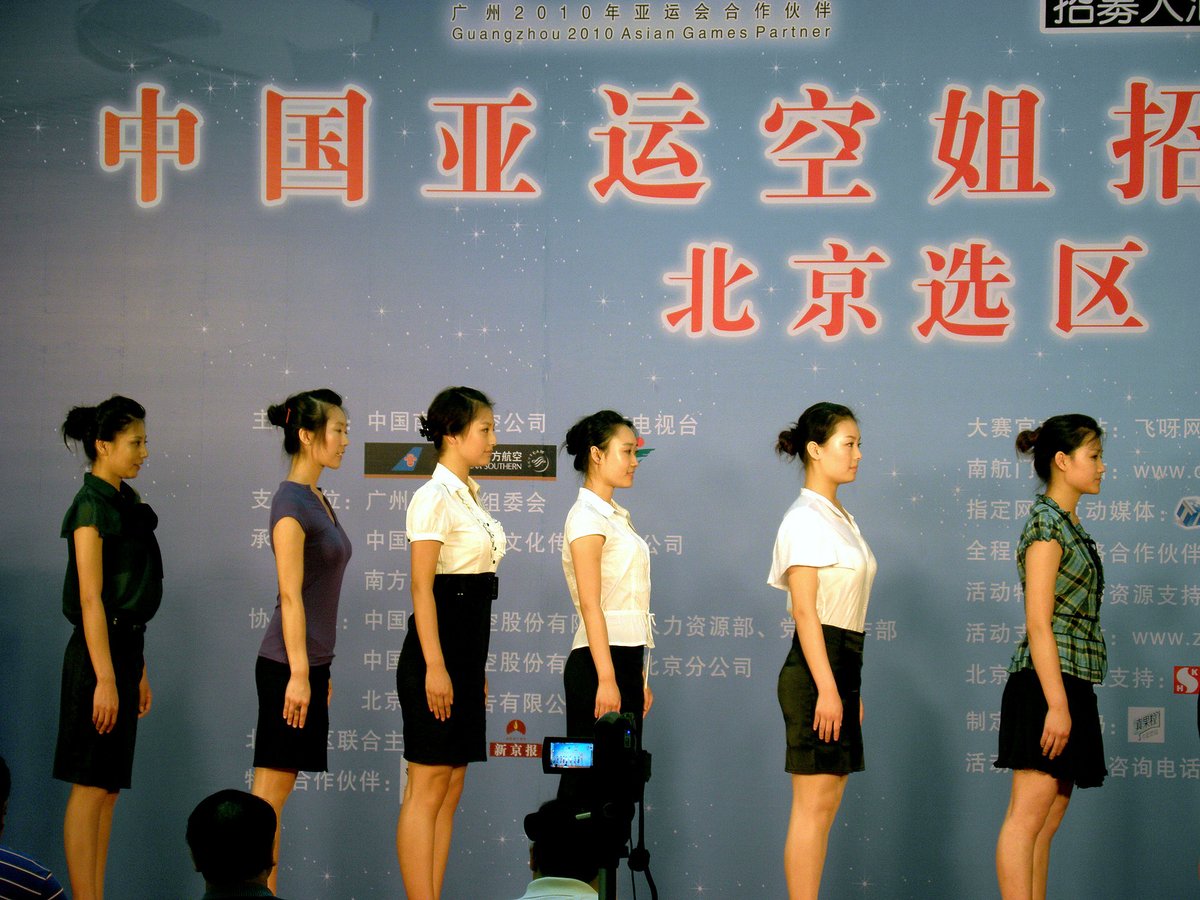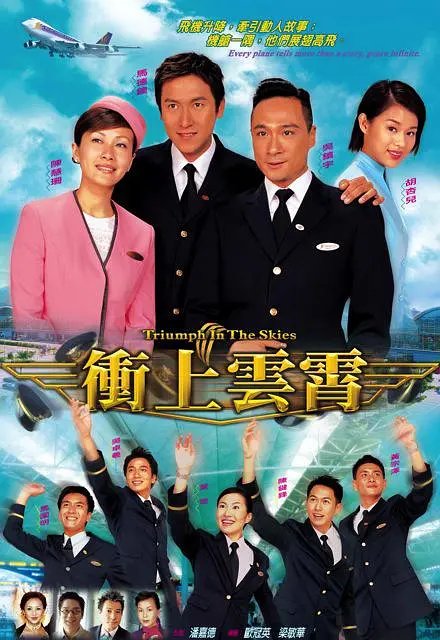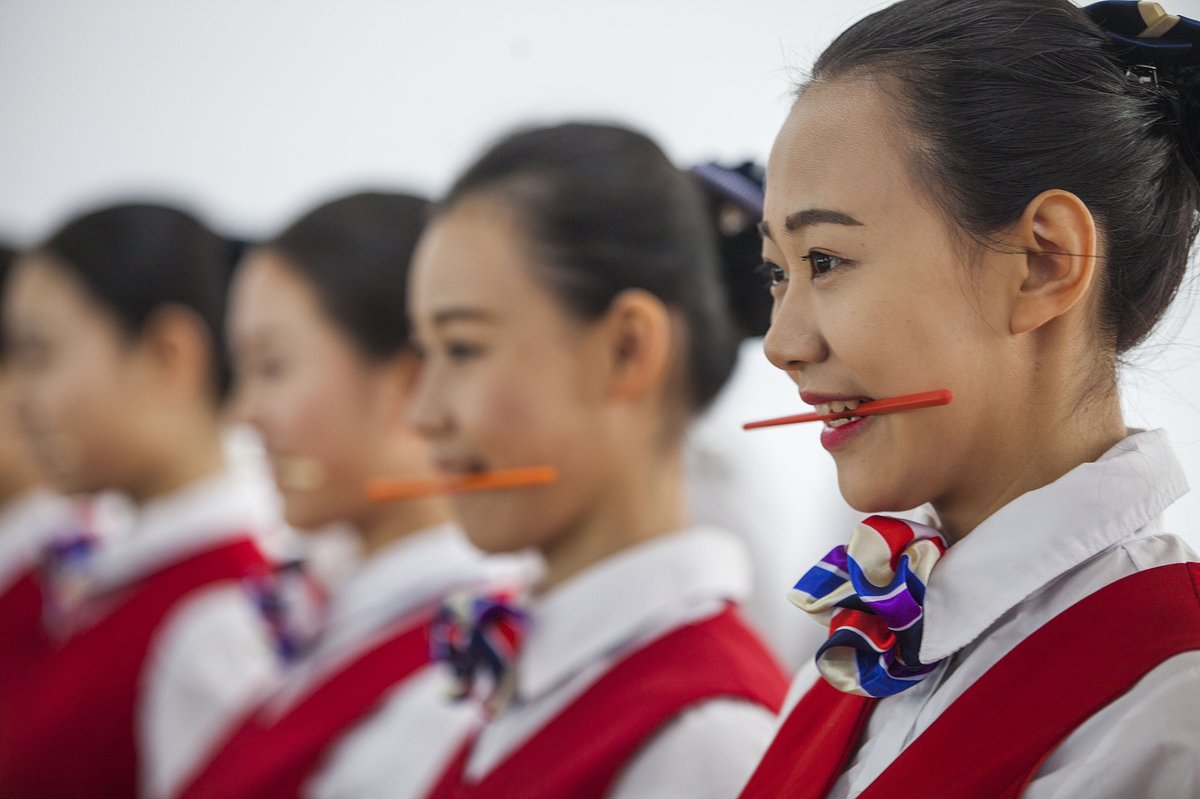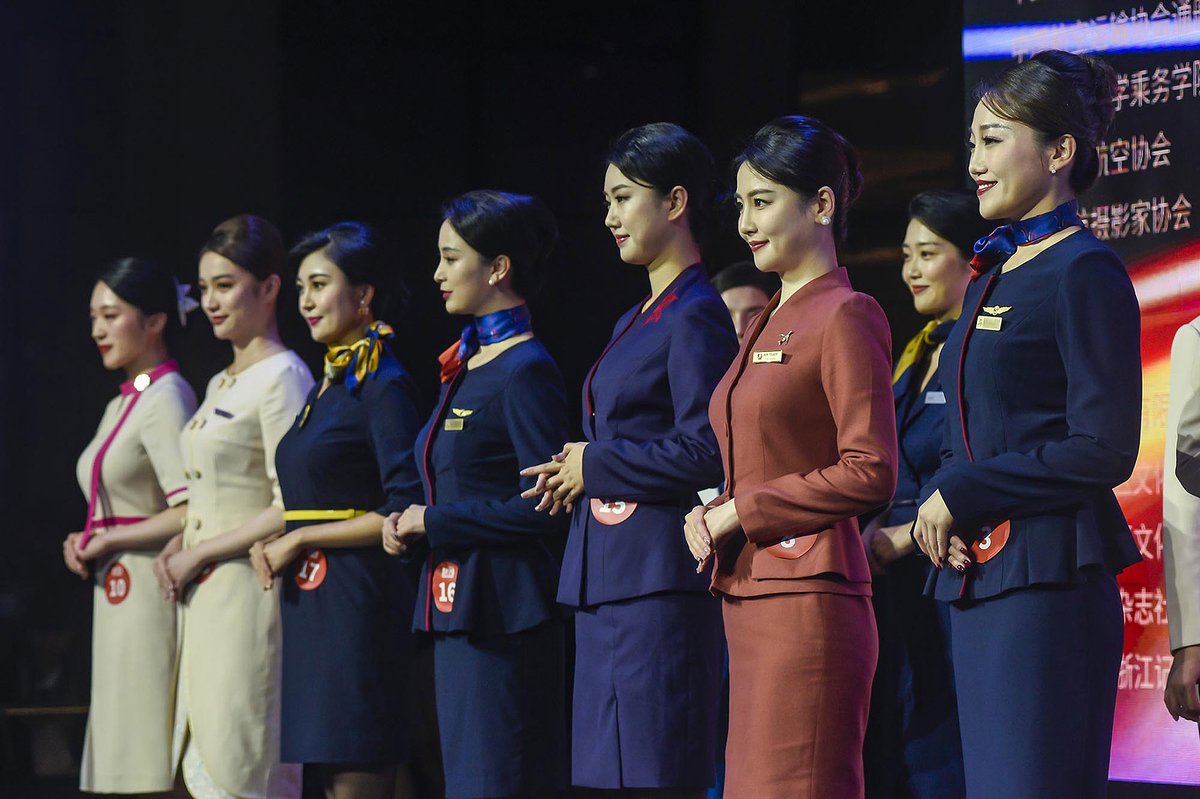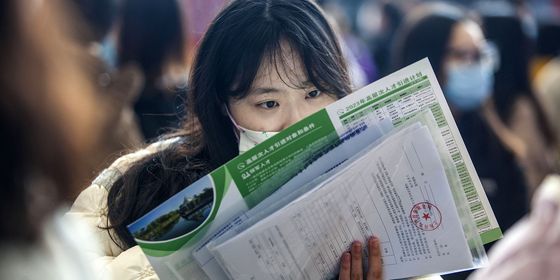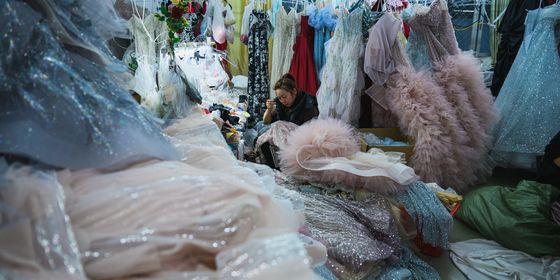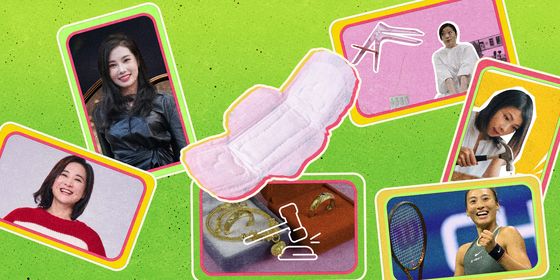Once a privilege for the few, air travel has changed dramatically—along with the female cabin crew who are now speaking out against unfair working conditions and unnecessary, even dangerous, dress codes
Sporting a mullet, a baggy Sailor Moon print T-shirt, and oversized jeans, Xiha—the stage name of a contestant on this July’s Chinese variety show The King of Stand-up Comedy—never expected the audience to guess her real occupation: a flight attendant.
“Why do we have to wear short skirts, stockings, and high heels when working in such a complex high-altitude environment?” questions the stand-up comedian, who has since left her job at the airline. She added that even during emergency evacuations, the last steps for stewardesses were to take off their stockings because they’re highly flammable. “So you know that wearing stockings can be dangerous. Then why do we need to wear them in the first place?” said Xiha.
Read more about China’s modern history
- The Rocky History of China’s Marriage Law Reforms
- History of Ballroom Dancing in China
- Bullets of Revolution: A Brief History of Political Assassinations in China
Since the routine aired in July, many have voiced their support for the former flight attendant and called to free stewardesses from the burden of the “duty to look beautiful (服美役)”—which often comes at the expense of their health, safety, and freedom. Meanwhile, it has reignited discussions about the profession’s history and how societal perceptions of flight attendants—as glamorous, stylish figures—were shaped by decades of media portrayals and airline marketing.
The take-off
In 1931, China’s first international airline, Eurasia Aviation (present-day China Central Airlines), was established. At this time, flights on Eurasia had no flight attendants aboard, as was common in these early years of air travel. One year earlier, the American nurse Ellen Church had become the first female flight attendant, and soon the position would become dominated by female workers.
With many American and European airlines soon hiring “angels in the sky” to attract consumers, Eurasia posted the very first recruitment ad for air hostesses in 1937 in Shen Bao, or Shanghai News. The ad indicates that they were seeking flight attendants aged between 20 and 25 years old who had a well-proportioned figure, were between 1.5 and 1.7 meters tall, weighed between 40 and 59 kilograms, and were fluent in Mandarin, Cantonese, and English. Six young Chinese women responded to the recruitment ad and, by 1938, became the first batch of flight attendants. Photos from the time show the first air hostesses wearing white shirts, gray skirts, and boat-shaped hats, with short, permed hair. Standing on the airplane boarding stairs, they looked proud and full of spirit.
After the founding of the People’s Republic of China in 1949, the Air Force began recruiting flight attendants mostly from Beijing junior schools, and 18 young women around the age of 18 were selected in 1955. Affectionately referred to as “Red Air Hostesses” by Chairman Mao Zedong, they served tea and newspapers in the air and accompanied Chinese leaders on their diplomatic ice-breaking visits to other countries.
As members of the Air Force, flight attendants studied a range of skills, including meteorology, medical care, and combat techniques. They wore uniforms in the Soviet military style of the time: green wool coats with double-breasted collared jackets underneath, paired with long leather boots and flat caps.
In 1972, with the visit of American President Richard Nixon and Japanese Prime Minister Kakuei Tanaka, Chinese airlines began to open up to the world. Flight attendants began to learn English and international etiquette. In 1980, Chinese airlines became independent from the Air Force and started operating as business enterprises. In 1988, Air China flight attendants began wearing “gemstone blue” uniforms designed by the French designer Pierre Cardin.
Air travel was a more celebratory experience in this period: attendants served the passengers luxuries like Peking duck and Moutai baijiu, and on festival days, would perform song and dance routines to mark the holiday. At the end of the trip, passengers received “gift from the sky” souvenirs to share with their families, such as a packet of Panda brand cigarettes, foreign chocolates, and ham sausages.
In the early years of the reform and opening-up, being a flight attendant became a highly regarded profession. A popular saying of the era was, “If you have a daughter, let her become a ‘girl in the sky.’” Zheng Jing, head of the Trade Union Office at China Eastern Airlines’ Zhejiang branch and a senior chief flight attendant, recalled in a 2018 interview with Zhejiang Daily that when she first became a flight attendant in the early 1990s, her monthly salary was 2,000 yuan—nearly ten times higher than the average income of 200 to 300 yuan at the time.
This superstar status continued into the new millennium. Starting in 2006, China Southern Airlines hosted the reality TV show Super Kongjie (超级空姐) — kong meaning sky, and jie, sister — for five consecutive years, following ordinary women as they competed in rounds of challenges to realize their flying dream. In 2006, over 10,000 young women took part in the show’s mass audition, with 50 eventually recruited by the airline.
Because the job had specific physique requirements, female flight attendants were perceived as tall, slim, beautiful young women—an image that was heavily reinforced by movies and TV shows. The 2003 Hong Kong drama Triumph in the Skies (《冲上云霄》) portrayed a glamorized version of the aviation industry through the love story of a stewardess and a pilot, inspiring many young fans to pursue careers in the industry. Then came the 2008 romantic comedy If You Are the One, directed by Feng Xiaogang. The film follows the love story of a middle-aged inventor and a young flight attendant, and was released to huge box office success and two subsequent sequels.
While these big- and small-screen successes depicted the lives of female flight attendants as glamorous, filled with adventures and romantic encounters around the world, the reality of long hours, health risks, and harassment was rarely acknowledged.
Encountering turbulence
China’s civil aviation passenger traffic reached 730 million in 2024. With air travel now accessible to more people, the mystique has largely faded. As flying became more routine, passengers no longer seemed to view the profession of flight attendants with the admiration it once enjoyed. One flight attendant joked online, “I am just a waitress pushing the cart, asking everyone chicken rice or beef noodles.”
According to their 2025 semi-annual reports, China’s three major airlines—Air China, China Southern, and China Eastern—posted a combined net loss of over 4.2 billion yuan in the first half of the year. Industry challenges such as the uncertain international environment, competition from high-speed rail, and a slowing domestic economy have all contributed to the decline. For flight attendants, this has meant stagnant or even reduced salaries, especially during the pandemic. Two decades ago, an experienced flight attendant earned over 10,000 yuan a month, a figure that inspired envy; today, most still make about the same, despite years of inflation.
While their salaries may be declining, the demands placed on them are not. On some international airlines, it’s not unusual to see female cabin crew of varied ages and body types, but on Chinese flights, being young and slim is still a requirement. Hainan Airlines has even stated that flight attendants represent the airline’s image, and that weight management is part of the job. In a notice issued in June 2023, the airline set strict standards for weight, requiring attendants who exceeded their “ideal” weight—calculated by height in centimeters minus 110 (in kilograms)—by more than 10 percent to be immediately grounded until they lost weight.
Being a flight attendant also carries numerous gender-related stereotypes. Some even assume that a female flight attendant’s purpose is to meet a wealthy passenger and marry. This, plus the long hours and physical demands, makes it a job often considered “a career only for the young.” Despite the Civil Aviation Administration of China’s retirement age of 50, many attendants leave between 30 and 40 due to family obligations, health issues, or sheer fatigue—both physical and emotional.
Lu Yang, who became a flight attendant last year, told Vista Media in July that while passengers rarely respond to her greetings, she often has to apologize for everything from bad weather to an occupied restroom. Lu adds that some male passengers would pester her for her contact information, undeterred by repeated refusals. Now she fends them off with ready-made excuses—“Sorry, I have a child” or “I’m married.” Lu and her colleagues also suffer from a range of occupational illnesses: herniated discs from lifting heavy objects, ear infections from cabin pressure changes, and menstrual disorders or gastrointestinal problems from irregular schedules.
Landing their stories
Like Lu, many female flight attendants have spoken out in recent years about the challenges they face, advocating for better working conditions and greater respect for their careers. With feminist issues gaining more public attention—especially through social media-savvy young women—the working conditions of female cabin crew were thrust into the spotlight again.
Shortly after Xiha’s sketch aired this past July, a woman shared a photo of her feedback card from a domestic China Eastern Airlines flight on the lifestyle platform Xiaohongshu (RedNote). She wrote: “I wish the airline would allow more freedom in dress. Skirts, stockings, and heels are not a must. In emergencies, skirts don’t protect the skin, stockings are flammable, and heels hinder evacuation.” The post quickly went viral, receiving over 57,000 likes. Many users shared their own feedback cards in the comments and expressed support for similar dress-code changes for railway workers and bank clerks.
And change is already underway. In late July, Shandong Airlines unveiled a new uniform, allowing female flight attendants to choose between pants or knee-length skirts, with lightweight flats replacing the high heels of the past. Spring Airlines has also swapped high heels for flats.
Just like Xiha said in an August interview with the Portrait magazine: “Even if you don’t know when this issue will be taken seriously or when anyone will listen, you have to speak up first. If you never speak, everyone will continue to endure and accept it, and the environment will assume it’s okay.”
